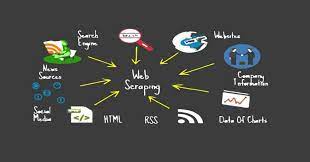Proper data management and organization are crucial for effectively storing and managing scraped data. Following best practices will help ensure data integrity, accessibility, and long-term usability. Here are some guidelines for data management and organization when working with scraped data:
- Data Storage:
- Choose an appropriate storage solution based on the size, structure, and type of data. Options include file-based storage (e.g., CSV, Excel), relational databases (e.g., MySQL, PostgreSQL), NoSQL databases (e.g., MongoDB, Cassandra), or cloud-based storage solutions.
- Consider the scalability and performance requirements of your data storage solution, especially if you anticipate large volumes of scraped data.
- Implement appropriate security measures to protect sensitive data, such as encrypting data at rest and in transit.
- Data Organization:
- Define a clear and consistent naming convention for files, folders, and database tables to facilitate easy identification and retrieval of data.
- Organize data into logical categories or directories based on factors such as data source, project, date, or data type.
- Consider creating a metadata catalog that provides information about the data sources, variables, data cleaning procedures, and any transformations applied.
- Version Control:
- Use version control systems (e.g., Git) to track changes and revisions to your data and analysis code.
- Maintain a detailed history of modifications, allowing you to revert to previous versions if needed.
- Version control helps ensure reproducibility and facilitates collaboration with team members.
- Data Backup and Recovery:
- Regularly back up your scraped data to prevent data loss in case of hardware failure, accidental deletion, or other unforeseen events.
- Consider implementing an automated backup system that creates regular backups and stores them in a secure location.
- Test the restoration process periodically to ensure that backups are valid and can be successfully restored if needed.
- Data Documentation:
- Document the data collection process, including details such as the scraping methodology, sources, and any limitations or biases associated with the data.
- Record the data preprocessing and cleaning steps performed, including any decisions made during the process.
- Maintain clear documentation of data schema, field definitions, and units of measurement used.
- Well-documented data allows for easier understanding, collaboration, and reproducibility.
- Data Quality Assurance:
- Develop data quality checks and validation procedures to identify anomalies, inconsistencies, or errors in the scraped data.
- Implement automated checks or scripts to monitor data quality over time.
- Regularly review and audit the data to ensure its accuracy, completeness, and adherence to predefined standards.
- Data Access and Security:
- Control access to the scraped data based on the principle of least privilege. Restrict access to authorized personnel only.
- Implement appropriate access controls, such as user authentication and authorization mechanisms, to protect sensitive data.
- Regularly review and update access permissions to ensure they align with the current requirements and roles within the organization.
By following these best practices, you can establish a robust data management and organization framework that ensures the integrity, availability, and usability of your scraped data.
SHARE
